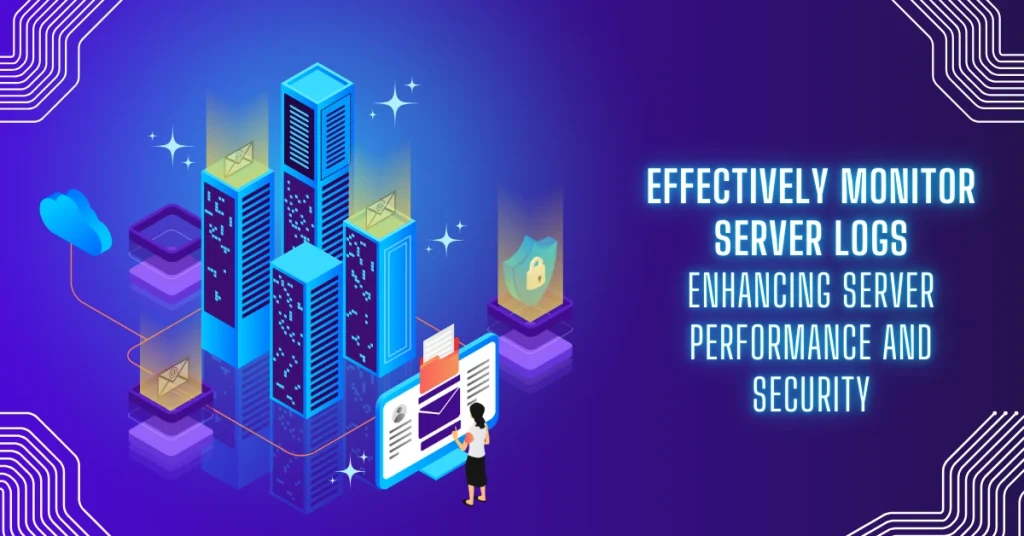Monitoring server logs effectively is critical for managing IT infrastructure. For both home and business users, server logs provide insights into server performance, user activity, errors, and potential security threats. Whether you are responsible for a single server or an entire network, log monitoring ensures smooth operations and timely responses to issues that may arise. By making effective use of server logs, you safeguard the stability, security, and efficiency of your IT systems.
Why Monitor Server Logs Matter?
Table of Contents
Server logs are more than just records of server activities; they are the history and blueprint of how your server operates. Logs include data on incoming and outgoing connections, system errors, access attempts, and application-specific events. For businesses, logs are particularly valuable for compliance, security audits, and diagnosing potential issues before they escalate.
The benefits of understanding and utilizing server logs include:
- Identifying and resolving errors: Logs help detect issues such as failed requests, application errors, or hardware malfunctions.
- Monitoring security threats: Unauthorized access attempts or unusual patterns in data requests often indicate security breaches or potential threats.
- Optimizing performance: Logs offer insights into server load, user traffic patterns, and other performance metrics.
- Ensuring compliance: Certain industries are required to maintain and audit server logs to comply with regulatory standards.
Key Types of Server Logs
Understanding the types of logs a server generates is fundamental for effective monitoring. Common log types include:
- Access Logs: Track requests made to the server, including IP addresses, timestamps, URLs accessed, and HTTP status codes. These logs help you understand who is accessing the server and what resources they are using.
- Error Logs: Record issues encountered by the server or applications running on it. These logs can indicate faulty configurations, broken links, or application errors.
- Authentication Logs: Track login attempts, both successful and unsuccessful, and provide insight into potential unauthorized access.
- System Logs: Contain information about the server’s operating system, kernel events, system calls, and hardware-related messages. These logs are crucial for system administrators.
- Application Logs: Generated by applications running on the server, detailing performance and errors at the application level.
- Audit Logs: Track specific actions taken by users, such as file access, database queries, or administrative actions, making them important for compliance and security auditing.
Each log type serves a unique purpose. Identifying which logs to monitor based on your objectives can help prioritize and streamline your approach.
Strategies for Monitoring Server Logs
Effective server log monitoring requires strategic methods tailored to your server’s setup, size, and function.
- Set Clear Goals: Define what you need from your log monitoring efforts. Your goals could include detecting security threats, improving performance, or troubleshooting application issues. Each goal will determine which logs you focus on and how you analyze them.
- Automate Log Collection: Manual log monitoring can be time-consuming and inefficient. Automation tools like Splunk, Graylog, and ELK Stack (Elasticsearch, Logstash, and Kibana) help centralize, organize, and analyze logs in real-time.
- Establish a Log Retention Policy: Not all logs need to be retained forever. Determine how long you need to keep each log type and set up an archiving or deletion policy accordingly. Regulatory requirements may influence this decision.
- Create Alerts for Anomalies: Use log monitoring tools to set up alerts for unusual activity, such as a high number of failed login attempts, sudden spikes in traffic, or repeated system errors. Alerts help you respond quickly to potential issues.
- Regularly Review and Audit Logs: Regular audits ensure that you catch overlooked issues. Schedule periodic log reviews and use the insights to improve your server’s performance and security.
- Filter and Structure Logs: Logs can be extensive. Applying filters, categorizing logs, and setting up dashboards to display key metrics can make monitoring manageable and effective.
Benefits of Using Log Management Software
For larger businesses or IT professionals handling multiple servers, manual log monitoring can become overwhelming. Log management software streamlines the process, providing features such as:
- Real-Time Analysis: Immediate insights into server activities, helping you address issues instantly.
- Pattern Detection and Machine Learning: Some tools offer machine learning capabilities to detect patterns or anomalies, indicating potential issues before they escalate.
- Data Visualization: Graphs, dashboards, and reports make data easier to interpret.
- Centralized Management: Manage logs from multiple servers in one place, simplifying analysis and reporting.
Popular tools for log management include:
- Splunk: Known for its powerful search and visualization features, ideal for large enterprises.
- Graylog: An open-source tool suitable for handling large volumes of logs efficiently.
- ELK Stack: A combination of Elasticsearch, Logstash, and Kibana that provides comprehensive log aggregation, search, and visualization.
Using log management tools can reduce the burden on your IT team, allowing them to focus on proactive management rather than reactively troubleshooting.
Security and Compliance Considerations
Server logs play a critical role in maintaining security and meeting compliance standards, especially in regulated industries such as finance, healthcare, and e-commerce. Server logs can reveal unauthorized access attempts, data breaches, and application vulnerabilities, which are essential for incident response.
To enhance security and compliance:
- Encrypt Logs: Encryption prevents unauthorized access, ensuring that sensitive data remains secure.
- Implement Access Controls: Limit who can view and edit log files. Only authorized personnel should have access to server logs to maintain data integrity.
- Comply with Data Retention Regulations: Many industries have specific guidelines on how long logs should be retained. Check compliance requirements and adjust your retention policy accordingly.
- Regular Security Audits: Conduct regular audits on your logs to ensure that potential vulnerabilities are identified and mitigated promptly.
Outsourcing Log Management
If log monitoring becomes too complex or time-consuming, outsourcing is an alternative. Third-party companies specializing in log monitoring can help with continuous monitoring, troubleshooting, and compliance. Companies like Log Inspector offer a range of log management services, including real-time monitoring, data backup, and system audits.
When outsourcing, consider the following:
- Security Policies: Ensure the provider follows strong security protocols to protect your data.
- Expertise and Reputation: Choose providers with experience in your industry and positive client reviews.
- Service Scope and Customization: Confirm that the services align with your requirements, whether for 24/7 monitoring, auditing, or specific compliance support.
Outsourcing log management can reduce workload, allowing your team to focus on core tasks while experts handle log analysis and troubleshooting.
Final Thoughts on Monitor Server Logs Effectively
Server logs are a critical part of server management, enabling you to monitor performance, ensure security, and stay compliant. For individuals and businesses with limited IT resources, automated tools and outsourced services offer a practical solution to manage log monitoring effectively.
Understanding your server log needs, setting up automated alerts, and employing the right tools can ensure your servers operate smoothly and securely.
Also Read: 6 Easy Ways To Speed Up Your Computer’s Performance For Remote Working

